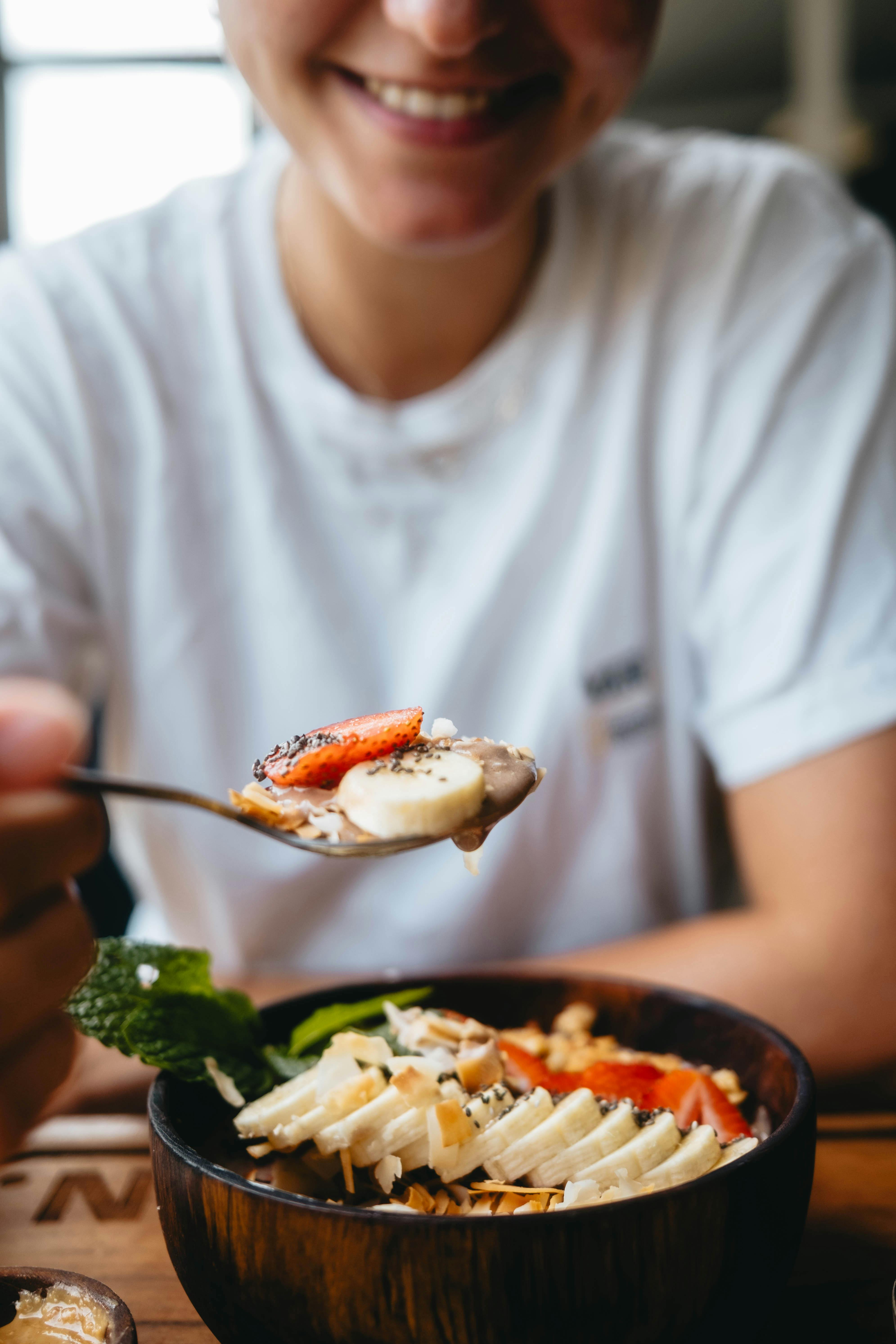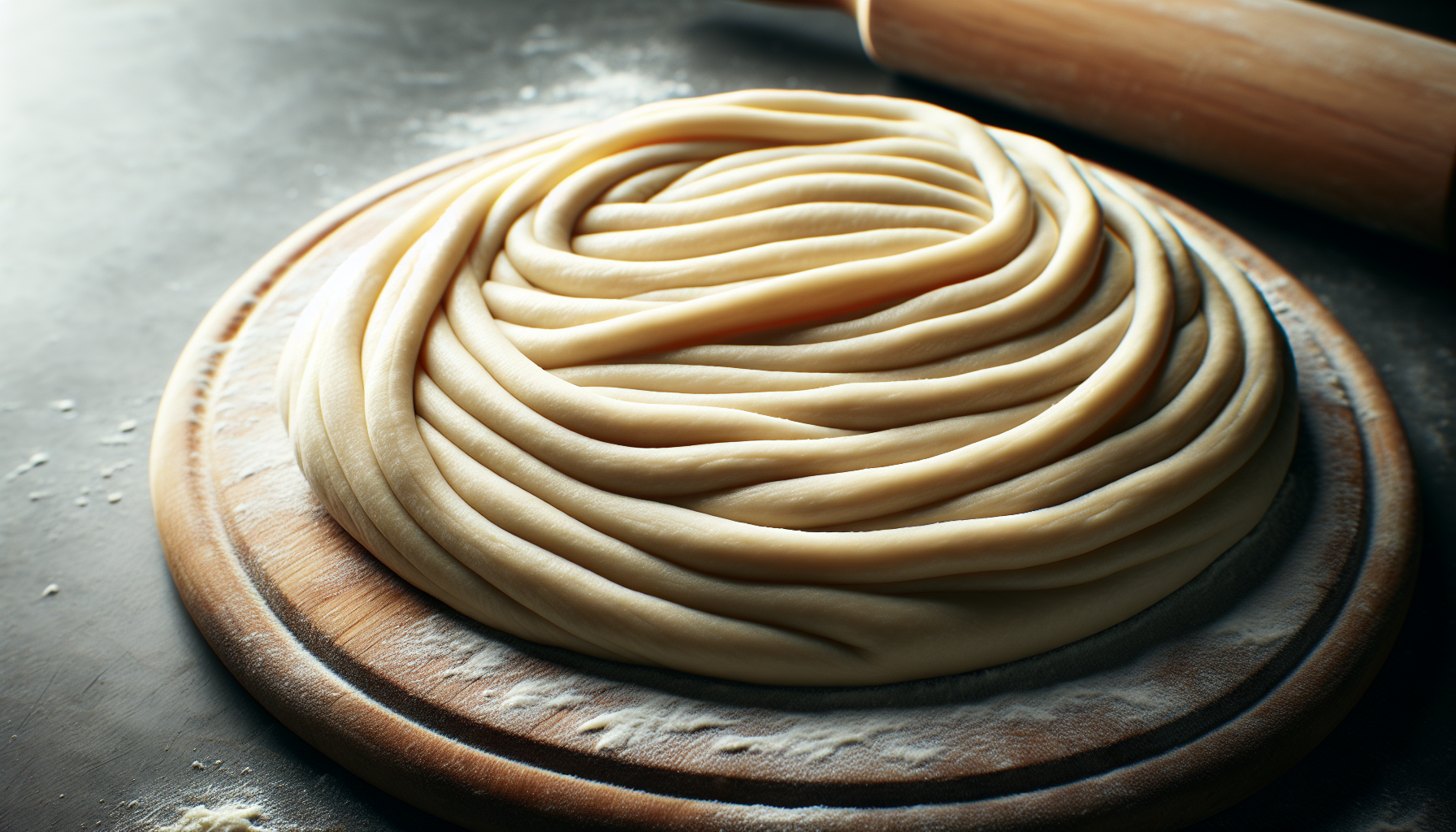In “The Perfect Pizza Making: From Dough to Toppings,” Tastepan offers a comprehensive guide that will transform your pizza-making game. With their expert cooking tips and techniques, you’ll master the art of creating the perfect pizza from scratch. From kneading the dough to choosing the best toppings, Tastepan’s detailed instructions and instructional videos will turn you into a kitchen pro. So get ready to impress your friends and family with your homemade, delicious pizzas that will rival any pizzeria. Let’s dive in and create the ultimate pizza experience together!

Making the Dough
Making homemade pizza starts with a great dough. Choosing the right ingredients and knowing the proper techniques are key to creating the perfect base for your pizza.
Choosing the Right Ingredients
To make the best dough, you’ll need the right ingredients. Start with high-quality flour, preferably bread flour or all-purpose flour. These types of flour have a higher protein content, which helps develop gluten and gives the dough structure and elasticity.
Next, you’ll need yeast to help the dough rise. Active dry yeast or instant yeast are both good options. You’ll also need warm water to activate the yeast. Make sure the water is not too hot or too cold, as extreme temperatures can affect the yeast’s ability to rise.
Salt is another essential ingredient in pizza dough. It enhances flavor and helps control the fermentation process. Olive oil is optional but recommended, as it adds richness and a subtle flavor to the dough.
Mixing and Kneading
Once you have the ingredients ready, it’s time to mix and knead the dough. In a large mixing bowl, combine the flour, yeast, salt, and olive oil. Slowly add the warm water while stirring the ingredients together.
Once the ingredients are combined, transfer the dough to a floured surface and begin kneading. Kneading helps to develop gluten and create a smooth, elastic texture. Use the heel of your hand to push the dough away from you, then fold it back towards you, rotating and repeating the process.
Continue kneading the dough for about 10 minutes, or until it becomes smooth and springs back when pressed. If the dough feels too sticky, you can add a little more flour. Conversely, if it’s too dry, add a small amount of water.
Proofing the Dough
After kneading, it’s time to give the dough time to rise and proof. Place the dough in a large, greased bowl and cover it with plastic wrap or a clean kitchen towel. Allow the dough to rise in a warm, draft-free area for about 1 to 2 hours, or until it has doubled in size.
During the proofing process, the yeast ferments and produces carbon dioxide gas, which causes the dough to rise. This step is crucial for achieving a light and airy crust.
Stretching and Shaping
Once the dough has doubled in size, it’s ready to be stretched and shaped. Start by gently punching down the dough to release any air bubbles. Transfer the dough to a lightly floured surface and divide it into individual portions, depending on the size of pizzas you’d like to make.
To stretch the dough, use your hands or a rolling pin. Start from the center and work your way towards the edges, being careful not to tear the dough. If the dough resists stretching, let it rest for a few minutes and try again. Stretch the dough into your desired shape, whether it’s round, rectangular, or any other shape you prefer.
Once the dough is stretched and shaped, it’s time to move on to the next step: preparing the perfect sauce.
The Perfect Sauce
The sauce is a crucial component of any pizza. It adds flavor, moisture, and helps bind the toppings to the crust. Choosing the right base and adding flavorful herbs and spices will take your pizza to the next level.
Choosing the Base
There are several options for the base of your pizza sauce. Traditional marinara sauce, made with tomatoes, garlic, onions, and herbs, is a classic choice. If you prefer a sweeter flavor, you can use a tomato sauce with added sugar or a tomato paste diluted with water.
Alternatively, you can experiment with different bases such as pesto, olive tapenade, or even BBQ sauce. These alternatives can provide unique flavors that complement specific toppings or create a distinct taste profile.
Adding Flavorful Herbs and Spices
To enhance the flavor of your sauce, add a variety of herbs and spices. Common options include dried oregano, basil, thyme, garlic powder, and crushed red pepper flakes. Use these ingredients sparingly at first, as their flavors can become overpowering if added excessively.
Experiment with different combinations to find your preferred taste. Remember that the sauce should complement the toppings, so consider the flavor profiles of both when selecting herbs and spices.
Selecting the Cheese
Cheese is one of the most important ingredients in pizza. It provides richness, creaminess, and that gooey stretchiness that we all crave. Exploring different cheese options and achieving the ideal cheese-to-sauce ratio will elevate your pizza to new heights.
Exploring Cheese Options
When it comes to pizza cheese, mozzarella is the most popular and widely used option. It melts beautifully and has a mild, slightly tangy flavor that complements most toppings. However, don’t be afraid to experiment with other cheeses to create unique flavor combinations.
Provolone, cheddar, fontina, and Parmesan are just a few examples of cheeses that work well on pizza. Mixing different types of cheese can create interesting flavor profiles and add complexity to your pizza.
Achieving the Ideal Cheese-to-Sauce Ratio
The cheese-to-sauce ratio is a crucial factor in determining the taste and texture of your pizza. Too much cheese can overwhelm the flavors of the sauce and other toppings, while too little can result in a dry and bland pizza.
A general guideline is to use about 1 to 1.5 cups of shredded cheese for a 12-inch pizza. However, this can vary depending on personal preference and the type of cheese you’re using. Adjust the amount of cheese accordingly to achieve the desired balance and coverage on your pizza.
Delicious Toppings
Toppings are where you can get creative and truly make your pizza your own. By using fresh vegetables and fruits, quality meats, and flavorful seasonings, you can create a mouthwatering masterpiece.
Fresh Vegetables and Fruits
Fresh vegetables and fruits can add vibrant colors, textures, and flavors to your pizza. Popular choices include bell peppers, onions, mushrooms, tomatoes, and olives. For a touch of sweetness, try adding pineapple or sliced fresh figs.
To enhance the flavors of the vegetables and fruits, consider lightly sautéing them in olive oil or roasting them before adding them to the pizza. This can help intensify their natural flavors and prevent them from releasing excess moisture onto the pizza.
Quality Meats
Quality meats can bring richness and a savory element to your pizza. Pepperoni, sausage, bacon, and ham are classic choices that pair well with various toppings and cheeses. For a gourmet twist, consider using prosciutto, salami, or even grilled chicken.
To ensure the meats cook evenly and stay moist, it’s best to pre-cook them before adding them to the pizza. This will also help remove any excess fat, preventing the pizza from becoming too greasy.
Flavorful Seasonings
Seasonings are the finishing touch that can take your pizza to the next level. Freshly ground black pepper, crushed red pepper flakes, garlic powder, and dried oregano are popular choices. Experiment with different seasonings to find your preferred flavor profile.
Sprinkle the seasonings sparingly over the pizza just before baking or after it comes out of the oven. This will allow the flavors to meld with the other ingredients without overpowering them.

Cooking Techniques
Now that you have your dough, sauce, cheese, and toppings ready, it’s time to cook your pizza to perfection. Preheating the oven, using a pizza stone, and utilizing a pizza peel are key techniques that will ensure a crispy, evenly cooked pizza.
Preheating the Oven
Before placing your pizza in the oven, it’s crucial to preheat it. This allows the oven to reach the desired temperature and ensures that the pizza cooks evenly from top to bottom.
Set your oven to the temperature specified by your recipe, usually around 475°F to 500°F (245°C to 260°C), and allow it to preheat for at least 20 to 30 minutes. This ensures that the oven and the pizza stone (if using) are properly heated, resulting in a crispier crust.
Baking on a Pizza Stone
Using a pizza stone helps to create a professional-level crust with a crispy texture. Place the pizza stone in the oven during the preheating process so that it becomes hot and ready to transfer the pizza onto.
Once the oven is preheated, carefully place the pizza on the hot pizza stone using a pizza peel or a flat baking sheet. The hot surface of the stone will help cook the bottom of the crust quickly, resulting in a well-browned and crispy base.
Using a Pizza Peel
A pizza peel is a large, flat, paddle-like tool used to transfer the pizza in and out of the oven. It allows you to easily maneuver the pizza without burning yourself or damaging it.
To use a pizza peel, sprinkle it with a small amount of flour or cornmeal to prevent the dough from sticking. Gently slide the peel under the pizza, making sure it’s centered, and carefully transfer it to the hot pizza stone in the oven. When the pizza is cooked, use the peel to slide it out of the oven and onto a cutting board.
Mastering the Art of Pizza Oven
If you’re serious about pizza making, investing in a pizza oven can take your skills to a whole new level. Exploring different types of pizza ovens and learning how to use wood, gas, or electric ovens can enhance the flavor and texture of your pizza.
Exploring Different Types of Pizza Ovens
There are several types of pizza ovens to choose from, each with its unique advantages and characteristics. Wood-fired ovens provide a smoky flavor and can reach high temperatures, allowing for quick and crispy cooking. Gas ovens provide consistent heat and are more convenient to use, while electric ovens offer precise temperature control.
Consider your preferences and cooking style before selecting a pizza oven. Each type has its benefits, and it’s important to find one that suits your needs and resources.
Using Wood, Gas, or Electric Ovens
Wood-fired ovens require a bit more preparation and skill but offer an unparalleled flavor. Start by building a fire using hardwood logs and allow the oven to preheat for several hours. The high temperatures achieved in a wood-fired oven create a crispy, blistered crust and help cook the pizza quickly.
Gas ovens are popular in professional kitchens and are a great choice for home cooks as well. They provide consistent heat and allow for precise temperature control. Follow the manufacturer’s instructions for preheating and cooking your pizza.
Electric ovens are the most common type found in households. They offer convenience and ease of use, with precise temperature settings. Adjust the temperature according to your recipe and follow the usual baking instructions.

Perfecting the Crust
The crust is often the star of the show when it comes to pizza, and perfecting its thickness, chewiness, and crispiness is essential. Achieving the desired crust characteristics will elevate your pizza and leave you craving for more.
Achieving the Desired Crust Thickness
The thickness of the crust largely depends on personal preference. Thin crusts are light and crisp, while thick crusts are chewy and substantial. Finding the balance between the two is key to creating a pizza with a satisfying texture.
To achieve a thin crust, stretch the dough to your desired thickness, making sure it’s even all around. For a thick crust, let the dough rise for a longer period during proofing and stretch it accordingly before adding your toppings.
Finding the Right Balance of Chewiness and Crispiness
A perfect pizza crust strikes the right balance between chewiness and crispiness. The inside of the crust should be soft and slightly chewy, while the outside should be golden brown and crispy.
To achieve this, make sure your oven is properly preheated and hot. A hot oven helps cook the crust quickly, creating that desirable contrast between a tender interior and a crispy exterior. Using a pizza stone or baking the pizza directly on the oven rack can also contribute to a crispier crust.
Taking the Pizza to the Next Level
Now that you have mastered the basics of pizza making, it’s time to get adventurous and take your pizza to the next level. Creating unique flavor combinations and experimenting with different toppings can result in unexpected and delightful culinary creations.
Creating Unique Flavor Combinations
Think beyond the classic Margherita or pepperoni pizzas and let your creativity shine. Experiment with different flavor profiles by combining unexpected ingredients. Consider adding ingredients like caramelized onions, arugula, goat cheese, or even roasted butternut squash.
Don’t be afraid to mix sweet and savory flavors, as well as different textures. The possibilities are endless, and you may discover new favorite combinations that become signature pizzas in your repertoire.
Experimenting with Different Toppings
The toppings on a pizza can make a world of difference when it comes to flavor and texture. Go beyond the usual suspects and explore different options such as grilled vegetables, seafood, or even exotic fruits.
Consider the seasonality of ingredients and explore local produce for inspiration. This not only ensures freshness but also allows you to support local farmers and promote sustainable cooking practices.
Optimizing Baking Time and Temperature
The baking time and temperature can greatly affect the outcome of your pizza. Adjusting these factors for thin and thick crusts will help you achieve the best results for each style.
Adjusting Time and Temperature for Thin and Thick Crusts
Thin crust pizzas require a shorter baking time and a higher temperature to achieve a crisp texture. Aim for a preheated oven temperature of around 475°F to 500°F (245°C to 260°C) and check the pizza after about 8 to 10 minutes. The crust should be golden brown and crispy.
For thicker crust pizzas, a longer baking time and slightly lower temperature are necessary to ensure the dough cooks through. Start with an oven temperature of around 450°F (230°C) and check the pizza after about 12 to 15 minutes. The crust should be golden brown and cooked to your desired level of doneness.
Remember to keep an eye on the pizza as every oven is different, and the baking time may vary depending on your dough thickness and toppings.
Slicing and Serving
Once your pizza is out of the oven and smelling incredibly delicious, it’s time to slice and serve it. Mastering the art of pizza cutting and pairing the pizza with the perfect beverage can make the dining experience even more enjoyable.
Mastering the Art of Pizza Cutting
Cutting a pizza into even slices can be challenging, but with the right technique, it becomes a breeze. Start by using a sharp pizza cutter or a large, sharp knife. Hold the cutter or knife at a slight angle and apply gentle pressure to make a clean cut through the crust.
For round pizzas, start by making a cut through the center from one side to the other. Then, make perpendicular cuts to create equal slices. For rectangular or square pizzas, make parallel cuts to create strips and then cut across to create the desired size of each slice.
Pairing Pizza with the Perfect Beverage
The perfect beverage can elevate your pizza experience by enhancing the flavors and refreshing your palate. Pairing different types of pizzas with complementary beverages can create a harmonious balance.
For traditional cheese or Margherita pizzas, a crisp and light beer, such as a pilsner or a lager, can be a great choice. The effervescence and clean flavors of the beer help cleanse the palate after each bite.
For pizzas with more complex flavors, such as those with spicy toppings or bold cheeses, consider pairing them with a hoppy IPA or a full-bodied red wine. The bitterness or the tannins in these beverages can balance out the intensity of the pizza flavors.
In the end, the perfect beverage pairing is a matter of personal preference, so feel free to experiment and find what works best for you.
By following these comprehensive steps and tips, you’ll be well on your way to creating the perfect homemade pizza every time. From making the dough to selecting the cheese, exploring different toppings, and optimizing baking techniques, mastering the art of pizza making is an enjoyable journey that will impress family and friends. So grab your apron, roll up your sleeves, and let the pizza-making adventure begin!

